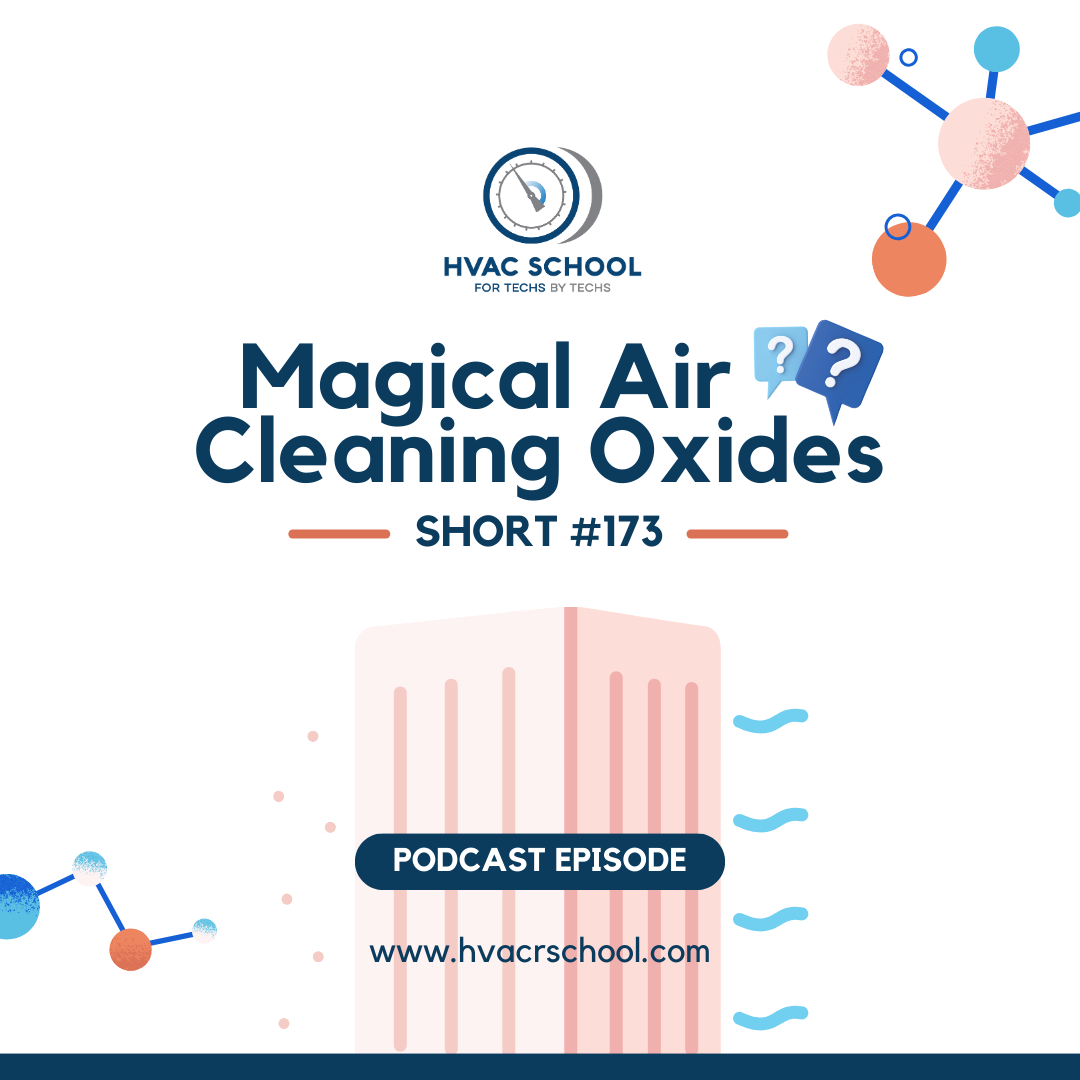Magical Air Cleaning Oxides? – Short #173

In this short podcast, Bryan talks about oxidation and all the buzz behind “magical air-cleaning oxides” and other similar IAQ products.
Oxidation is the loss of electrons, and reduction is the gain of electrons; oxygen commonly loses electrons. Rusting is a common example of oxidation; it happens when iron and oxygen interact in air or water. Metals that are more likely to react with oxygen (or corrode) are “less noble” than more noble metals. Less-noble metals, known as anodes, are sometimes used sacrificially to prevent the oxidation of nobler base metals, known as cathodes.
While iron oxidation results in corrosion, some IAQ products use the process to bind oxygen molecules to unwanted substances. The IAQ products that use oxidation use the natural tendency of oxygen to lose electrons when bonding with other molecules. Ozone is a common agent of these IAQ products because an ozone molecule is very unstable and has three oxygen atoms, meaning it combines with other molecules via oxidation; it stabilizes other unstable molecules. Ozone, however, also reacts similarly with cells in our respiratory system and can cause irritation.
In our industry’s efforts to reduce the negative effects of COVID-19 viruses, oxidation has generated a good deal of interest. Nowadays, some IAQ products use smaller amounts of ozone or use activated carbon to catch ozone before it enters the conditioned space. Many manufacturers that use oxidation as a strategy use other ion-based oxidizers, just not ozone. Some of these oxidizers can break pollutants into aldehydes and other chemicals that may harm our bodies.
If you want to learn more, you can read Oxidizers and What It Has to Do With COVID-19.
Learn more about the HVACR Training Symposium or buy a virtual ticket today at https://hvacrschool.com/symposium.
If you have an iPhone, subscribe to the podcast HERE, and if you have an Android phone, subscribe HERE.
Check out our handy calculators HERE.
Author:









Comments
To leave a comment, you need to log in.
Log In